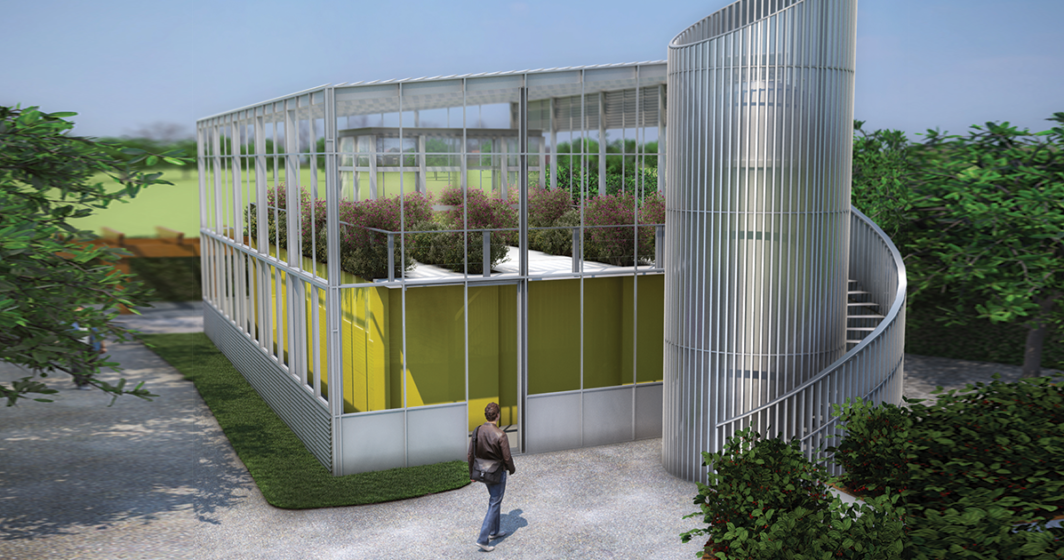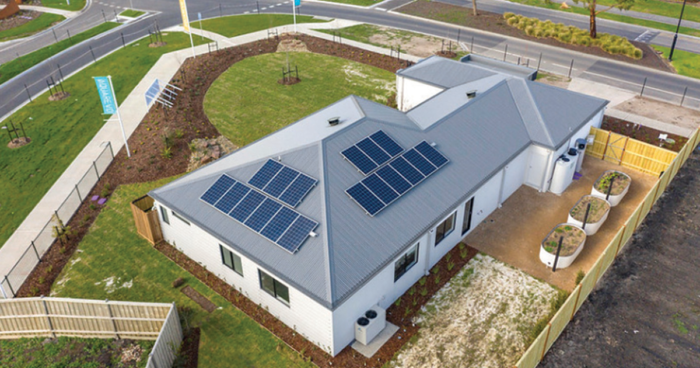When technology meets plumbing the future is bright as Kathryn Kernohan discovered when she investigated a state of the art development.
What do you get when you combine a state-of-the-art wastewater treatment site, rainwater tanks with technology capable of receiving weather forecasts directly from the Bureau of Meteorology and six-star accreditation for EnviroDevelopment by the Urban Development Institute of Australia?

The answer is Aquarevo, an innovative new urban development located in Lyndhurst, about 36km southeast from Melbourne’s central business district.
A collaboration between the country’s leading property developer Villawood Properties and South East Water, which delivers water and sewerage services to 1.8 million people across Melbourne, Aquarevo is on track to become Australia’s most energy and water efficient residential community. This is very important at this time due to the combined pressures of climate change uncertainty and increasing population.
The first residents of the 460-home development moved in in June, and about 100 homes are currently under construction with over 300 lots sold.
“We’re at the beginning of the construction period, and the development is on track to be completed in three to four years,” says Steve Muir, Integrated Water Delivery Manager at South East Water.
“What is pleasing is that the sustainability features are an add-on to most buyers. We have found that for most people, the location is what attracts them to Aquarevo but when they understand the features and initiatives at the estate, they get more interested.
“We would like to think this development will make people realise how cost-effective water-saving and solar systems can be,” he says.
For South East Water, being closely involved in a residential development is something new.
The project was initiated because South East Water owned the land, which was previously the site of the Cranbourne Water Purification Plant.
“The land was excess to our needs and we were looking into what to do with it. South East Water was keen to develop an example of how watersaving features could be built into a standard urban development, and that is how Aquarevo began,” he says.
Aquarevo’s water-saving features are expected to reduce the use of potable water by up to 70 per cent on each of the estate’s 460 properties.
Each home within the estate will be plumbed to harness three different sources of water - drinking, recycled and rainwater.

Aquarevo House
All homes will be connected to a pressure sewer system that pumps wastewater to a 12m wide, 20m long water recycling plant, located within a greenhouse, adjacent to the railway line.
Here, wastewater will be treated using the Organica Food Chain Reactor, which combines natural roots such as local native plants and artificial substrate to recycle wastewater to the highest quality class-A standard. The recycled water will then be sent back to each home in the estate where it can be used for non-drinking purposes such as for use in washing machines, toilets and gardens.
The Aquarevo development will be the first time the Organica Food Chain Reactor has been built in Australia, despite being widely used in more than 50 urban developments across Europe, Asia and North America.
“We always intended for the development to have a local treatment plant on site, and in 2014 we went to market looking for an innovative technology to match the innovative water and energy-saving features we had planned,” says Steve.
“When Hydroflux came along with this model, it looked great and the examples from overseas indicated it was exactly what we needed. We expect it will be operational within 18 months to two years.”
The Organica Food Chain Reactor will be built following EPA Victoria approval, and after at least 40% of the houses in Aquarevo are built and occupied.
Each property in the development will also be fitted with a 2,400 litre capacity rainwater tank, to capture water from the roof. After filtration, UV and heat treatment, this water will be used in the home to supply hot water in showers, baths, laundry and washing machine.
Rainwater tanks will be equipped with South East Water’s Tank Talk® technology to provide storage data during heavy rainfall events. TankTalk® gathers weather forecast data from the Bureau of Meteorology, and ensures water is released ahead of predicted heavy rainfall to minimise overflows or moderate flooding in local waterways.
Aquarevo also features an innovative pressure sewer system, rather than a traditional gravity sewer network. Each home will have a sewer pod unit sitting underground in the front yard, controlled by South East Water’s OneBox® device. OneBox® also tracks and monitors household water and energy use, and controls and monitors hot water supply and temperature.
Its technology also allows South East Water to remotely monitor and control the pressure sewer network and regulate sewer flows.
Steve describes the OneBox® device as “the brain of the development,” and says that there is scope for the technology to be rolled out to other developments in Australia and abroad.
In addition to the water-saving initiatives, Aquarevo homes will feature rooftop solar systems and many will receive batteries by Sonnen.
South East Water has recently commissioned Aquarevo House at the development. Built by Arden Homes from sustainable and recycled materials, the 8-energy starred house features a 5kw solar power system, a 7.5kwh Sonnen battery, double glazed energy advantage windows and doors and an all-electric heating and cooling system that can be powered by the solar panels and battery storage.
Aquarevo House will be used to showcase the water-saving initiatives within the estate, as well as for research, development and education purposes.
The company is taking a hands-on approach to the development, working closely with over a dozen building partners, including Arden Homes and Porter Davis Homes.
“We are on-site during construction to work with the builders - this is a completely different approach to what large-scale builders are used to in terms of catering for rainwater systems, a pressure sewer system and other features.”
South East Water is also involved in Australia’s largest urban renewal project, Fishermans Bend. Covering approximately 485 hectares of land in the heart of Melbourne, the project is expected to be home to approximately 80,000 people by 2050.
For this project, the company has proposed an integrated water system, which leverages the entire water cycle, to reduce the reliance of the rapidly growing region on the existing water and wastewater systems.
South East Water has also pledged to reduce its carbon emissions by 45 per cent by 2025, demonstrating a commitment to sustainability in other parts of the organisation.
Share this Article






